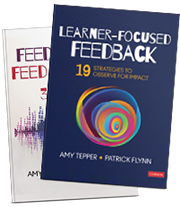Over the past three years ReVision Learning facilitators have routinely been met with the comment from administrators “but that’s not how we were told we have to observe teachers.” We first heard this in New York as we provided training to Network Teams and then in Connecticut with districts that engaged in on-going calibration activities with us. In some ways this had become a beacon, reinforcing that we were actually on the right path to helping administrators/evaluators complete the difficult and complex work of reviewing teacher practice to support professional learning and student outcomes. As we engaged in our work which to this point includes over 2,100 classroom observations and calibration training of over 500 administrators in over 20 districts and school systems, we began to realize that what was being taught was not about completing observations to provide information for professional learning, but, instead, a mechanical recording of evidence to satisfy a set of guidelines established by each district in response to state mandates.
Scripting, the act of writing/recording everything one sees and hears during a class, was being taught as the sole approach to recording what was happening during a formal observation as opposed to observing and engaging in the classroom learning experience to assist teachers with feedback that supported areas of growth as well as reinforce areas of strength. Observation of teaching practice was not about supporting and continuing to nurture effective teaching (the authentic purpose of evaluation practice), it was about documenting as often as one could in order to create a defense for a summative review at the end of the year. It is no wonder that teacher evaluation has been met with such disdain from teachers. Even the most relationship-focused administrator was starting off in a deficit with their staff.
During calibration activities with district evaluators who experienced this model of training, we began to expose them to (sometimes remind them of) additional strategies. Creating classroom diagrams that could be used to track such instructional elements as student engagement in the instruction, teacher movement and teacher questioning techniques, student response, student-student interaction, resource use, and so much more. We introduce the use of “Scriptive Verbatim,” an approach that targets particular dialogue among any and all members of the classroom helping to focus teacher feedback on particular areas of growth. We taught non-disruptive observation strategies that allowed the observer to move throughout the classroom, talk with students to determine the levels of understanding they had of the learning content, ask questions of students to better understand and provide feedback to the teacher about the impact of selected teaching and assessment strategies.
The bottom line is that engaging in observation and reviews of practice is about leading people not managing them. The observation strategies being taught seem to focus more on management of process and information than they do on leading of people towards growth and change. This will not lead to effective teachers in every classroom and administrators and evaluators have to work towards finding a balance in their practice. They have to consider how their observations are not about just doing it right but doing the right thing.
A couple resources that have proven helpful to evaluators:
I. The ReVision Learning Supervisory Continuum
With the new evaluation systems being applied, evaluators found themselves in what can be considered “new learning.” What better way to help someone understand new information but a rubric? So, ReVision Learning developed and applied a continuum for evaluators with two domains. The first focuses on evidence-based observation and defined the evaluator practice associated with collecting and organizing evidence before, during and after an observation. The second domain focuses on coaching for feedback and is introduced later in our training as we turn from calibration training to teacher feedback and support (a topic for a future post).
We have used the tool in multiple ways with evaluators. At first the tool is used to analyze how effectively an evaluator can collect and organize evidence during a classroom observation. These are most often based on videos of lessons and became a primary mechanism for gauging an evaluator’s readiness for the work in the districts we serve. During the school year, evaluators are encouraged to use it as a self-reflection tool to review their observation reports and help measure growth in their own practice. At any time, evaluators can submit one of their reports (names removed of course) and ReVision Learning will review their reports, “score” them and provide specific feedback using this continuum. One principal went as far as to share it with her staff as a way to hold herself accountable within the process. That was by far my favorite use of the tool.
II. ReVision Learning’s Collegial Calibrations™ Model
Another major obstacle to the development of strong observation techniques and, ultimately, calibration to the rubric or instruments being used is the fact that simulated, video-based classroom lessons can only allow for certain techniques to be authentically practiced. In response, we created a model for live calibrations with teams of evaluators. Led by a facilitator (at least at first), teams of evaluators complete observations in real classrooms with real students, and with real learning happening. This allows evaluators to work collaboratively in post observation debriefs, compare evidence collected, review and assign a performance level to help “calibrate” in a deeper more meaningful way than video sometimes allow. Additionally, a ReVision Learning facilitator uses the continuum throughout the year and provides targeted feedback towards evaluator improvement.
An additional resources for authentic instructional analysis…
The Research for Better Teaching, founded by education leader Jonathan Saphier, provides outstanding resources for leaders targeted at on-going and effective instructional feedback.
RBT’s Skillful Leadership Program is well aligned to ReVision Learning’s approaches or – better put – we align well to Dr. Saphier (he’s been doing this much longer). RBT has provided an instructional observation framework that provides a more authentic and meaningful approach to observation of teacher practice. Saphier encourages interaction with the learning versus a process for record keeping that merely manages information and therefore, will merely manage people.
By considering the reviews of practice associated with teacher evaluation as an opportunity for deep change, observations will not simply become another method of collecting evidence and information to support general analysis of teaching in schools. We will be able to shift our understanding of teaching and learning through routine and collaborative analysis of data sources that highlight the learning within our classrooms. On-going analysis in this manner will also reinforce an understanding of performance beyond what is witnessed in a classroom on a given day for a given lesson, generating a more complete picture of a teacher’s work and it’s support of student outcomes. Based on the varied data, administrators and teachers can build targeted solutions that will positively impact teaching practices and learning outcomes. Framing our observation practice as learning opportunities versus the organization of a scripted defense will also allow teachers and administrators to create collaborative learning communities to help support school-wide and differentiated professional learning.





Leave a Reply